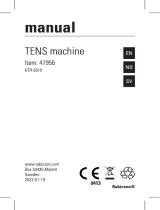
3 / 19
Table of Contents
1 Overview.................................................................. 4
1.1 Expected Usage and Operating Environment ................................ 4
1.1.1 Expected Usage .................................................... 4
1.1.2 Contraindications ................................................... 4
1.1.3 Intended Use ....................................................... 4
1.2 Standard Configuration List ................................................ 4
1.3 Product Dimensions ...................................................... 4
1.4 Storage Environment ..................................................... 4
1.5 Operating Environment .................................................... 5
1.6 Transportation ........................................................... 5
1.7 Warning Symbols ......................................................... 5
2 Product Introduction ........................................................ 5
2.1 Working Principle ......................................................... 5
2.2 Product Composition ...................................................... 5
2.3 Structure and Functions ................................................. 5
2.3.1 Front Panel ........................................................ 5
2.3.2 Rear Panel ........................................................ 6
2.3.3 Legend Display ..................................................... 6
2.4 Main Performance Parameters ............................................. 7
2.5 The following parameters of the instrument are considered basic performance
parameters: ................................................................. 8
3 User Manual............................................................... 8
3.1 Activating the Instrument .................................................. 8
3.2 App Introduction .......................................................... 8
3.3 App Connection .......................................................... 9
3.4 Starting Measurement .................................................... 9
3.5 Powering Off ............................................................ 10
3.6 Battery Inspection and Replacement ....................................... 10
3.7 Precautions for Use ...................................................... 11
4 Maintenance and Care ..................................................... 11
4.1 Daily Inspection ......................................................... 11
4.2 Storage Method ......................................................... 12
4.3 Maintenance and Care ................................................... 12
4.4 Service Life ............................................................. 12
5 Symbol Explanation ....................................................... 12
6 After-sales Service ........................................................ 12
7 Warranty Card ............................................................ 14
8 Attachment C FCC Caution ................................................. 14
9 Attachment C ELECTROMAGNETIC COMPATIBILITY ......................... 15
C.1 Components information ................................................. 16
C.2 RF Transmitting ......................................................... 17
C.3 IMMUNITY TEST LEVELS ............................................... 17




















